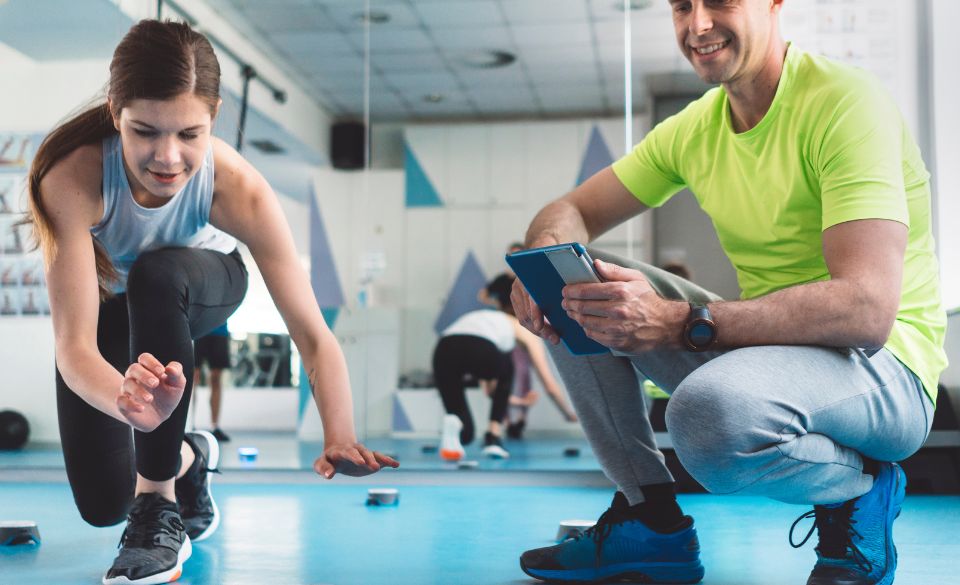
10 Best Ways To Train Agility
Page Contents
Agility training has become an increasingly popular method for athletes and fitness enthusiasts to improve their physical performance and overall fitness. Agility training is a type of physical training that focuses on improving an individual’s ability to change direction quickly and efficiently, making it a vital component of athletic performance.
Whether you are a professional athlete or just looking to improve your overall fitness, incorporating agility training into your workout routine can provide numerous benefits. From improved balance and coordination to reduced risk of injury, agility training can help you take your physical performance to the next level.
In this blog, we will explore the benefits of agility training and provide tips and techniques for incorporating it into your workout routine. Whether you are a seasoned athlete or just starting out, this blog will provide valuable insights and information to help you improve your agility and enhance your overall fitness.
What Is Agility Training
Agility training is a type of physical training that focuses on improving an individual’s ability to change direction quickly and efficiently. Agility is an important component of athletic performance, and can be defined as the ability to move the body quickly and effectively in different directions.
Agility training typically involves a combination of exercises that aim to improve an individual’s balance, coordination, reaction time, speed, and power. These exercises can include cone drills, ladder drills, plyometric training, resistance training, balance training, sport-specific drills, speed and sprint training, reaction training, and using agility equipment.
Cone drills involve setting up a series of cones or markers and practicing different movements such as shuffling, cutting, and backpedaling. Ladder drills involve performing different footwork patterns on a ladder or agility ladder. Plyometric training involves explosive, jumping movements that can improve power, speed, and agility. Resistance training involves using weights or resistance bands to improve strength and power. Balance training can involve using unstable surfaces, such as a balance board or foam pad, or performing exercises on one leg.
Sport-specific drills can also be incorporated into agility training, with athletes practicing movements and drills that are specific to their sport. For example, basketball players may practice defensive slides or ball-handling drills, while soccer players may practice quick turns and dribbling drills.
Agility training can benefit athletes of all levels, as well as individuals looking to improve their overall fitness and reduce the risk of injury. By improving agility, individuals can become more efficient in their movements, enhance their athletic performance, and reduce the risk of falls and other injuries.
Why Is Agility Training Important?
One of the main reasons why agility training is important is that it helps to improve overall physical performance. By improving agility, individuals can become more efficient in their movements, allowing them to perform better in sports and other physical activities. Agility training can also help to improve cardiovascular health, muscular endurance, and overall fitness levels.
Agility training is particularly beneficial for athletes who need to perform quick and sudden movements, such as basketball players, football players, and soccer players. By improving agility, athletes can become faster, more agile, and more responsive to changing conditions on the field.
Another key benefit of agility training is that it can help to reduce the risk of injury. By improving balance, coordination, and reaction time, individuals can become more stable and less prone to falls and other accidents. This can be particularly important for older adults, who may be at a higher risk of falls and other injuries.
Agility training can also help to improve cognitive function, including memory and attention span. This is because agility training requires individuals to process and react to information quickly, which can help to sharpen cognitive skills.
Best Ways To Train Agility
Agility is a crucial component of athletic performance, and can be defined as the ability to change direction quickly and efficiently. Developing agility can improve athletic performance and reduce the risk of injury, making it an important aspect of training for athletes of all levels. Here are 10 of the best ways to train agility, supported by studies and expert recommendations.
1. Cone Drills
Cone drills are a popular way to improve agility, and involve setting up a series of cones or markers and practicing different movements such as shuffling, cutting, and backpedaling. A study published in the Journal of Strength and Conditioning Research found that cone drills can significantly improve agility and change of direction ability in soccer players.
2. Ladder Drills
Ladder drills involve performing different footwork patterns on a ladder or agility ladder. These drills can improve foot speed, coordination, and agility, and have been shown to be effective in improving agility in basketball players, according to a study published in the Journal of Human Kinetics.
3. Plyometric Training
Plyometric training involves explosive, jumping movements that can improve power, speed, and agility. A study published in the Journal of Strength and Conditioning Research found that plyometric training can improve agility in soccer players.
4. Resistance Training
Resistance training, such as weightlifting or using resistance bands, can improve strength and power, which are important components of agility. A study published in the International Journal of Sports Physiology and Performance found that resistance training can improve agility in male collegiate soccer players.
5. Balance Training
Improving balance and stability can improve agility by reducing the time it takes to shift weight and change direction. Balance training can involve using unstable surfaces, such as a balance board or foam pad, or performing exercises on one leg. A study published in the Journal of Athletic Training found that balance training can improve agility in female basketball players.
6. Sport-Specific Drills
Practicing sport-specific movements and drills can improve agility for specific sports. For example, basketball players may benefit from practicing defensive slides or ball-handling drills, while soccer players may benefit from practicing quick turns and dribbling drills.
7. Speed and Sprint Training
Improving speed and acceleration can improve agility by allowing athletes to change direction more quickly. Speed and sprint training can involve sprints of varying distances and intensities, as well as interval training. A study published in the Journal of Sports Science and Medicine found that interval sprint training can improve agility in youth soccer players.
8. Reaction Training
Improving reaction time can improve agility by allowing athletes to respond more quickly to changes in direction or opponents. Reaction training can involve using visual or auditory cues to signal movements, or practicing defensive or offensive drills with a partner.
9. Agility Equipment
Using agility equipment, such as hurdles, cones, or agility ladders, can improve agility by providing a structured and challenging environment for training. A study published in the Journal of Sports Science and Medicine found that using agility equipment can improve agility in female handball players.
10. Incorporating Variety
Incorporating a variety of different agility training methods can help prevent boredom and ensure that athletes are training different aspects of agility. Mixing up training methods can also improve performance and reduce the risk of injury.



